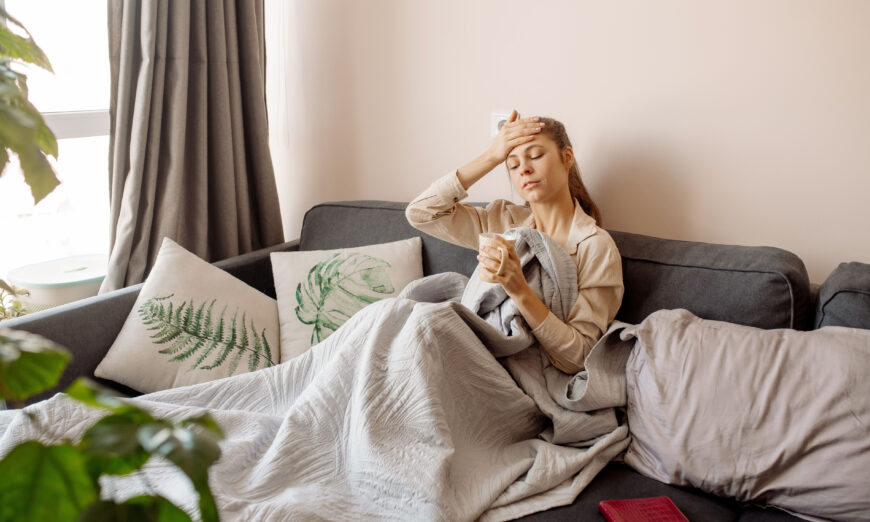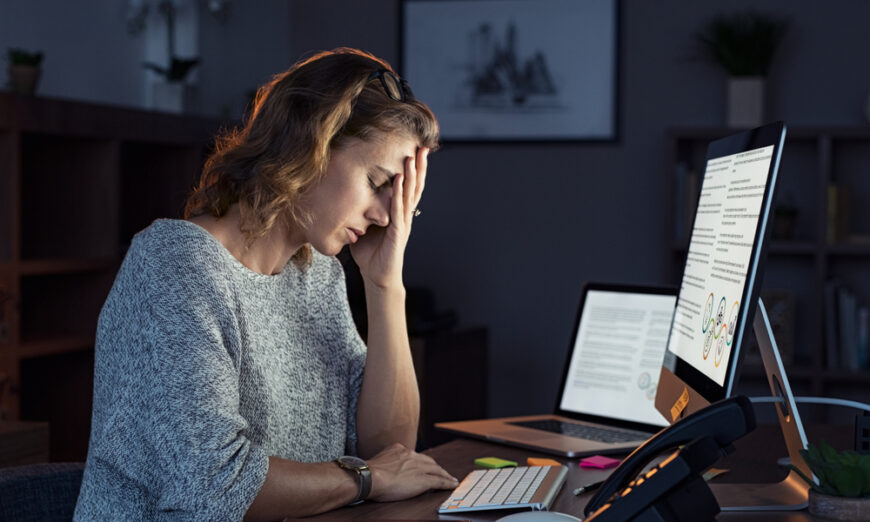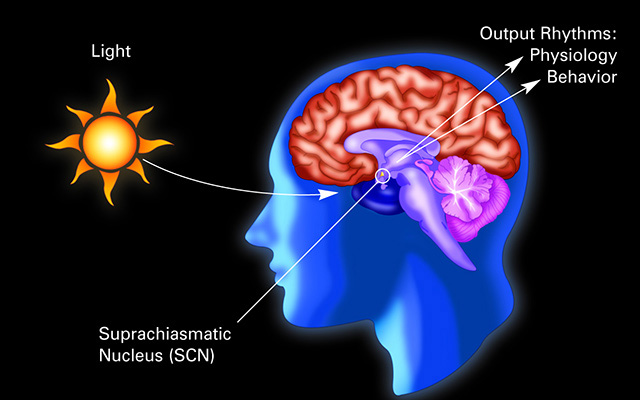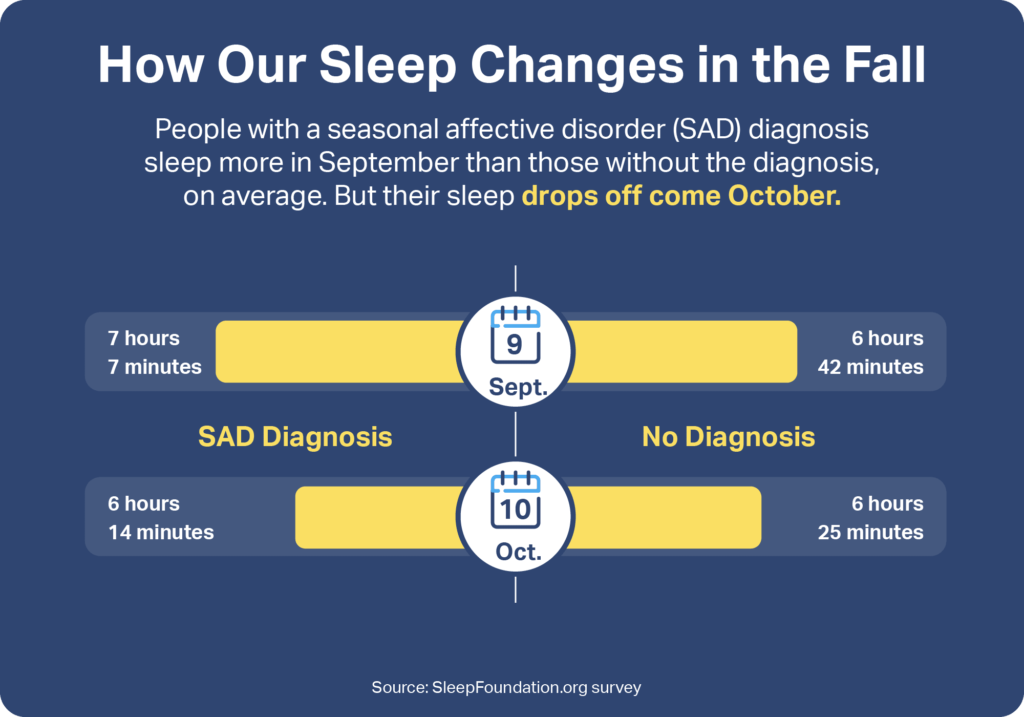
Signs of post-viral chronic fatigue syndrome (CFS) include fatigue, combined with brain fog or pain that lasts more than three months after the initial infection.
Nearly three years into the COVID-19 pandemic, experts are trying to understand the lingering symptoms of what is commonly called long COVID, who is most at risk, and how the symptoms can best be treated.
A cross-sectional study of over 16, 000 individuals found 15 percent of U.S. adults with a prior positive COVID-19 infection reported current symptoms of long COVID.
The Centers for Disease Control and Prevention (CDC) reports that one in 13 U.S. adults experience symptoms lasting three or more months after first contracting COVID-19.
These symptoms, also called post-COVID Conditions (PCCs), are most often seen in patients over 65 years old with pre-existing medical conditions.
“This may be the result of worsening of one or more known conditions, but also may stem from altered immune responses,” Dr. Richard Becker of the Division of Cardiovascular Health and Disease at the University of Cincinnati College of Medicine, told The Epoch Times.
Research from earlier this year confirmed that even after a mild infection, people can experience significant disturbances in their immune responses lasting months.
Becker emphasized that PCCs are equally likely to occur in patients with COVID-19 whether they were hospitalized or stayed home.
“In our experience treating over 500 patients with PCC,” said Becker, who also runs the UC Davis Health Post-COVID-19 Clinic, “The most common symptoms [of PCC] are fatigue, post-exercise exhaustion, shortness of breath, and chest pain.”
Studies also show that brain fog and loss of taste or smell are also commonly seen among these patients.
Becker’s initial treatment approach includes carefully selected tests to evaluate the heart, lungs, muscles, and joints. A diagnosis pertaining to one or more of these is followed by targeted treatment based on teaching patients physical and mental ways to ease symptoms.
“We have found that a COVID-recovery rehabilitation program with a focus on the mechanics of breathing, paced activity, and guidance to avoid excess physical, mental, or emotional stress can be beneficial,” said Becker.
Post-Viral Chronic Fatigue Syndrome
A review of COVID-19 cohort studies finds persistent fatigue was reported by up to 33 percent of patients from 16 to 20 weeks post-symptom onset.
“Although deaths, heart damage, and strokes can be the most devastating persistent sequelae of COVID, the major issue is the post-viral chronic fatigue syndrome and fibromyalgia,” said Jacob Teitelbaum, M.D., a board-certified internist and nationally known expert in the fields of chronic fatigue syndrome, fibromyalgia, sleep, and pain.
Signs of post-viral chronic fatigue syndrome (CFS) include fatigue, combined with brain fog or pain that lasts more than three months after the initial infection.
“It is suspected that a significant portion of people who dropped out of the workforce in the ‘Great Resignation’ had milder cases of post-COVID CFS,” said Teitelbaum.
Chronic fatigue syndrome can severely affect our quality of life. “In the 10 percent of COVID cases that have more severe post-viral fatigue, it can be totally crippling,” he explained. “Even leaving people bed and housebound.”
There are currently no particular treatment options for post-COVID chronic fatigue syndrome, although research to find effective methods is ongoing.
However, Teitelbaum believes chronic fatigue syndrome after COVID is treatable, and research he co-authored found that a commonly available root extract could help.
Previous studies have found that a unique Panax ginseng root extract called Korean red ginseng, often resulted in improvement for people living with chronic fatigue syndrome.
Teitelbaum’s research showed that 60 percent of people with post-viral chronic fatigue syndrome or fibromyalgia improved by simply taking Korean red ginseng.
Improvements in this group were a 67 percent average increase in energy, 44 percent average increase in overall well-being, 48 percent average improvement in mental clarity, 46 percent average improvement in sleep, 33 percent average decrease in pain, and a 72 percent average increase in stamina.
Ginseng is considered safe to use for most people but is contraindicated for pregnant women due to a lack of information about its effect on the fetus.
“Our research has shown that post-viral chronic fatigue syndrome and fibromyalgia are very treatable,” he said. “The problem is that there is no expensive medication needed, so no one pays for the doctors to get the information.”
Shortness of Breath
Up to 12 percent of people will experience shortness of breath (dyspnea) after COVID.
“Shortness of breath is very common post-COVID, but usually not dangerous,” said Teitelbaum. “Mostly it’s simply scary.”
You can use a pulse oximeter when you’re experiencing shortness of breath to tell whether it’s a lung or heart problem (due to low oxygen levels)—or just a sensation of breathlessness.
An article in Harvard Health found strong, scientific evidence that there are many supplements that can help us heal after COVID.
According to Teitelbaum, if it’s a heart problem, there is a mix of nutrients that increase cardiac efficiency and can “markedly” improve cardiac function and stamina. These nutrients include a high-dose B-complex with magnesium, D-Ribose, coenzyme Q10, and other herbs and nutrients, as he recommends on his website.
Lung and other inflammation resulting from COVID may be helped with curcumin, Boswellia (frankincense), and glutathione.
“All of these supplements are relatively low cost,” Teitelbaum reiterates. “And therefore doctors don’t hear about them.”
As with any supplement, some people may not react well when using these remedies and may experience stomach discomfort using Boswellia and high doses of curcumin. Long-term use of glutathione has been linked to lower zinc levels.
Brain Fog
Nearly one-third of post-COVID patients will experience cognitive impairment called “brain fog,” (1, 2) that can seriously impair memory and executive functioning. However, there are currently no FDA-approved treatments for this condition.
In November, researchers from Yale Medical School published a case study showing guanfacine (used for treating blood pressure) and the antioxidant N-acetylcysteine (NAC) reduced the cognitive deficits (brain fog) associated with long COVID in eight out of 12 patients. According to the study authors, both substances may work together to reduce inflammation in the brain and spinal cord.
They noted one patient who stopped taking guanfacine due to an episode of low blood pressure and reported their brain fog returned. The condition was resolved when they resumed taking the drug.
“The finding that one patient’s cognitive abilities worsened when guanfacine treatment was suspended, and improved with guanfacine reinstatement, supports a therapeutic role for this compound,” the authors wrote.
“These drugs are affordable and widely available,” said Arman Fesharaki-Zadeh, M.D., Ph.D., a behavioral neurologist and neuropsychiatrist at Yale Medicine, “You don’t need to wait to be part of a research trial. You can ask your physician.”
They also emphasized that placebo-controlled trials are needed to better understand how these drugs work to treat brain fog.
Based on the studies of these low-cost, doctor-recommended remedies, there is help at hand—and hope for those suffering the long-term, sometimes debilitating effects of long COVID. Remember to consult your doctor for possible contraindications to any medications you may be taking before trying any new remedies.






